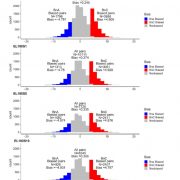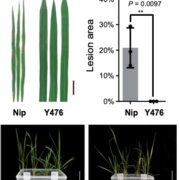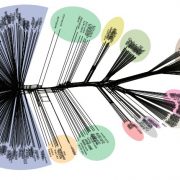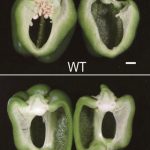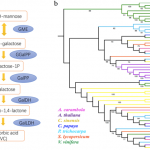Improvement of predictive ability in maize hybrids by including dominance effects and marker x environment models ($) (Crop Sci.)
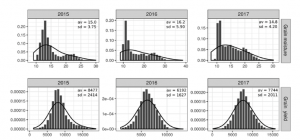 Heterosis is phenomenon that occurs when crossbred individuals show qualities (such as such as size, growth rate, fertility, and yield) that are superior to those of both parents. In maize, heterosis can be explained in terms of hybrid vigor, and this has been well studied using traditional breeding. However, testing multiple heterotic groups in different environments and breeding cycles is labor-intensive, presenting a bottleneck in maize breeding programs. The evolvement of genomic selection has made it possible to predict hybrid performance through evaluating the dominance gene action while accounting for other factors such as the impact of nonadditive effects and genotype x environment (G × E) interaction. In this study, Ferrão et al. used genomic selection to analyze the grain yield and moisture over three different cycles in multiple environments in maize. Their results showed the differences in performance for the two maize traits. For example, they demonstrated that including dominance effect in the model increased the predictive ability for grain yield by up to 30%, while additive models yielded better results for grain moisture. The authors also reported that including G × E interaction in the model increased accuracy in the prediction for one environment and thus, provides a premise for further studies on the prediction accuracy of G × E interaction models in multiple environments. (Summary by Modesta Abugu @modestannedi) Crop Science: 10.1002/csc2.20096
Heterosis is phenomenon that occurs when crossbred individuals show qualities (such as such as size, growth rate, fertility, and yield) that are superior to those of both parents. In maize, heterosis can be explained in terms of hybrid vigor, and this has been well studied using traditional breeding. However, testing multiple heterotic groups in different environments and breeding cycles is labor-intensive, presenting a bottleneck in maize breeding programs. The evolvement of genomic selection has made it possible to predict hybrid performance through evaluating the dominance gene action while accounting for other factors such as the impact of nonadditive effects and genotype x environment (G × E) interaction. In this study, Ferrão et al. used genomic selection to analyze the grain yield and moisture over three different cycles in multiple environments in maize. Their results showed the differences in performance for the two maize traits. For example, they demonstrated that including dominance effect in the model increased the predictive ability for grain yield by up to 30%, while additive models yielded better results for grain moisture. The authors also reported that including G × E interaction in the model increased accuracy in the prediction for one environment and thus, provides a premise for further studies on the prediction accuracy of G × E interaction models in multiple environments. (Summary by Modesta Abugu @modestannedi) Crop Science: 10.1002/csc2.20096



